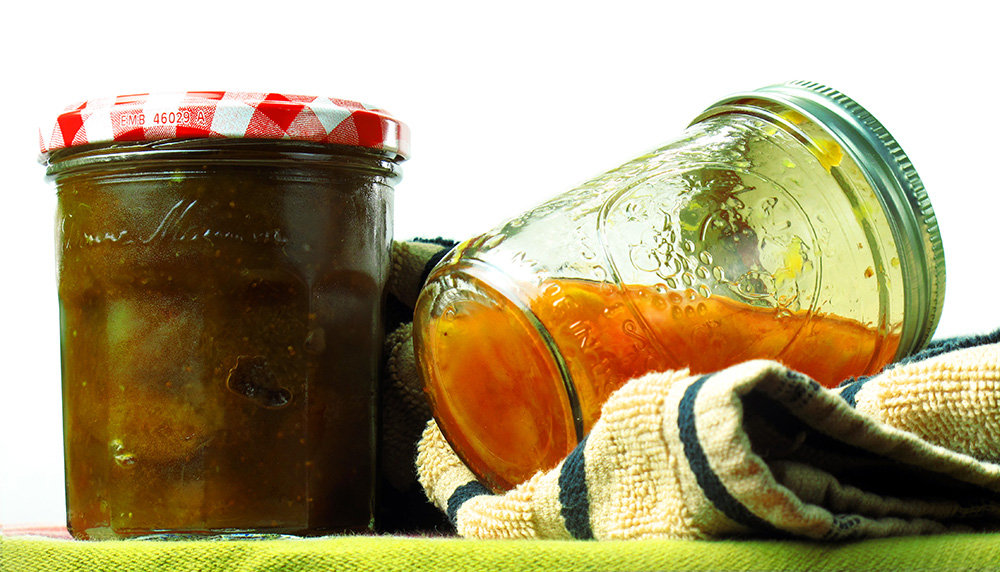Self-preservation

Without doing any research, I’m going to guess that home canning came into existence in the early 1900’s and reached its zenith around the middle of the last century. The emphasis on sterilization seems very Depression Era to me. It also — the act of canning, I mean — seems very wholesome. Very solid. White Christmas and Radio Flyer, pipe tobacco and people out for evening walks stopping to talk with other people about human-scale matters in tidy front yards.
December 6, 1941, I guess. Then or thereabouts.
A friend of mine is canning this year. Pickles, preserves. Chutney-like things. Four dozen jars and counting. Not much by Depression Era standards probably, but it looks like the motherload to me. It’s a lot of work, too, and If time is money, definitely not a cost-conscious way to go. No economy of scale whatsoever.
But that’s not the point.
As a reward for my help in the garden whence much of the raw materials came, I was given several sealed jars that I guess would have lasted forever if I hadn’t opened them the minute I got them home. Why put off til tomorrow what you can gorge on today?
I’ll hijack a line from the mass now: “Fruit of the vine and work of human hands.” An invisible transformation takes place. Chemically the same as what my friend gave me, the stuff that comes out of the factories is fundamentally different. It isn’t sacramental at all. It feeds our bodies, but does it feed us? Not so much.
Folks in the God business won’t admit it, probably not even to themselves, but we’re perfectly capable of producing holy things in abundance all by ourselves, sometimes out of thin air and sometimes in cooperation with other life forms. People or plants or other kinds of animals, it doesn’t matter. Holy things of the highest order.
Things much better for us, too, than what they sell in stores.